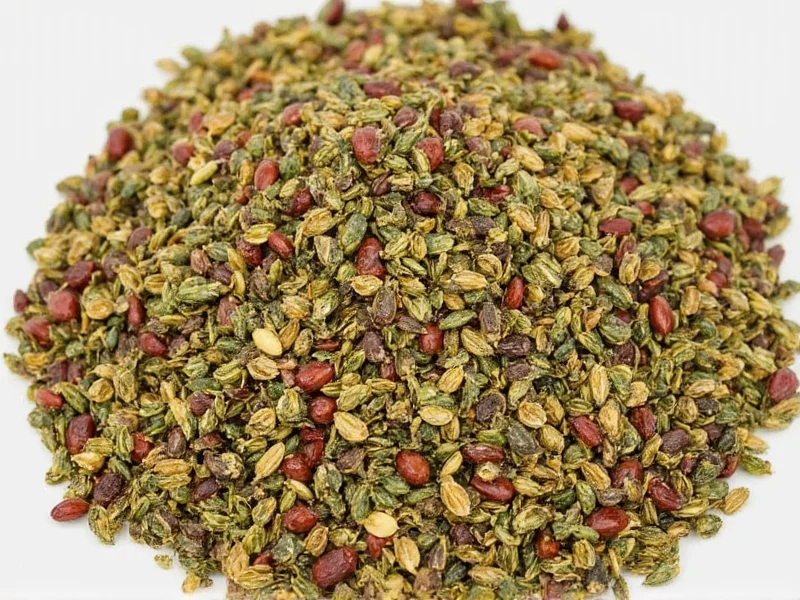The best substitutes for dried savory are thyme (use 1:1 ratio), marjoram (1:1 ratio), poultry seasoning (1:1 ratio), or a custom herb blend of thyme, rosemary, and sage. For bean dishes, thyme works exceptionally well, while poultry dishes benefit most from marjoram or poultry seasoning.
Running out of dried savory mid-recipe doesn't have to ruin your cooking experience. This versatile herb, available in both summer and winter varieties, adds an earthy, slightly peppery flavor to dishes ranging from beans and stews to poultry and stuffing. When you need a replacement, understanding which alternatives work best for your specific dish ensures your meal maintains that distinctive savory depth.
Understanding Dried Savory and Its Role in Cooking
Dried savory, particularly summer savory, is a key ingredient in many traditional recipes, especially across European cuisines. Its unique flavor profile—earthy with subtle peppery notes—makes it invaluable in bean dishes, where it both enhances flavor and may help reduce gas production. Winter savory offers a stronger, more resinous taste suitable for heartier dishes. When substituting, consider both the dish type and whether your recipe calls for the milder summer or more robust winter variety.
Top Substitutes for Dried Savory
Not all substitutes work equally well in every application. The right choice depends on your specific recipe and what flavors complement your dish best. Here's a detailed comparison of your best options:
| Substitute | Ratio to Use | Best For | Flavor Notes |
|---|---|---|---|
| Thyme | 1:1 | Bean dishes, stews, roasted vegetables | Slightly stronger, more floral than savory |
| Marjoram | 1:1 | Poultry, tomato-based sauces, stuffing | Milder, sweeter than savory |
| Poultry Seasoning | 1:1 | Poultry dishes, stuffing, gravies | Contains savory plus other complementary herbs |
| Sage | 1:2 (use half) | Meat dishes, stuffing, hearty stews | Stronger, more pungent flavor |
| Herbes de Provence | 1:1 | Mediterranean dishes, roasted meats, vegetables | Contains savory-like herbs with floral notes |
Choosing the Right Substitute for Your Recipe
When selecting a dried savory replacement, consider these factors to maintain your dish's intended flavor profile:
For Bean and Legume Dishes
Thyme serves as the most effective dried savory substitute in bean recipes. Its earthy notes complement legumes beautifully while providing similar digestive benefits. Use equal amounts of dried thyme for dried savory in recipes like baked beans, lentil soup, or three-bean salad. For the best results when looking for a substitute for dried savory in beans, add the thyme early in the cooking process to allow flavors to meld.
For Poultry and Stuffing
Marjoram makes an excellent dried summer savory replacement in poultry dishes. Its sweeter, milder profile won't overpower delicate chicken or turkey flavors. When substituting in stuffing recipes, use equal parts marjoram for savory, or reach for poultry seasoning which typically contains savory plus complementary herbs like sage and thyme.
For Tomato-Based Sauces and Stews
In robust dishes like tomato sauces, marinara, or hearty stews, a combination of herbs works best as a dried savory alternative. Try mixing equal parts thyme and marjoram, using the same total quantity as the savory called for in your recipe. This creates a balanced flavor profile that mimics savory's unique characteristics.
Creating Your Own Savory Substitute Blend
For the most versatile dried savory replacement, create a custom blend you can keep on hand:
- 2 parts dried thyme
- 1 part dried marjoram
- ½ part dried sage
Mix these proportions thoroughly and store in an airtight container away from light. This blend works exceptionally well as a dried savory herb substitute across multiple applications. When using this homemade mixture, substitute equal amounts for the dried savory called for in your recipe. Properly stored, your substitute blend maintains freshness for up to six months.
When Substitutes Won't Work: Recipes That Truly Require Savory
While excellent substitutes exist for most applications, certain traditional recipes rely specifically on savory's unique properties. Classic German Bohnenkraut (bean herb) recipes and some French fèves au lard (baked beans) depend on summer savory's distinctive flavor. In these cases, consider making a special trip to a well-stocked grocery store or herb shop, as the substitute may alter the dish's authentic character.
Maximizing Flavor with Savory Substitutes
To get the most from your dried savory replacement, follow these professional tips:
- Add dried herb substitutes early in the cooking process for soups and stews to allow flavors to develop fully
- For finishing dishes, use half the recommended amount of stronger substitutes like sage or rosemary
- When substituting in bread recipes, pair thyme with a pinch of garlic powder for closer flavor matching
- Always crush dried herbs between your fingers before adding to release essential oils











 浙公网安备
33010002000092号
浙公网安备
33010002000092号 浙B2-20120091-4
浙B2-20120091-4